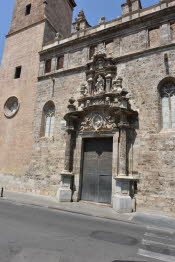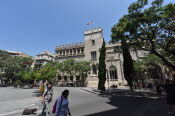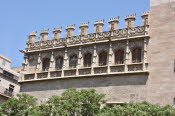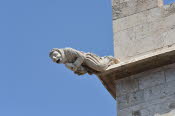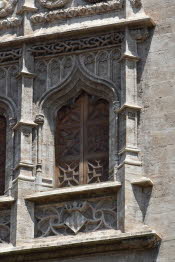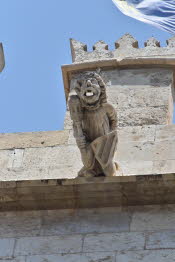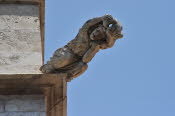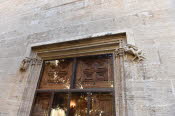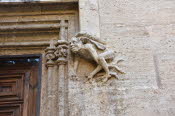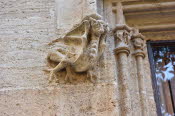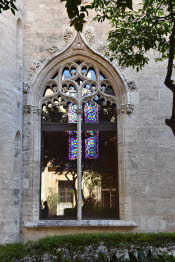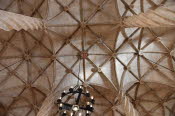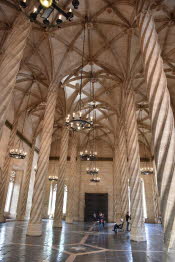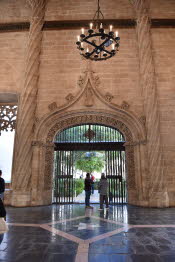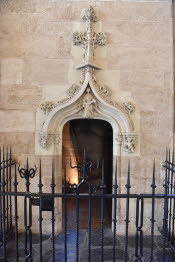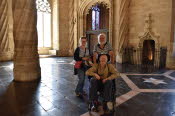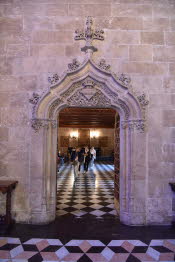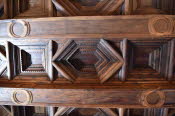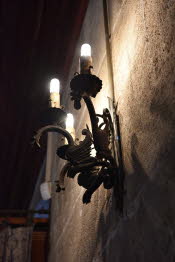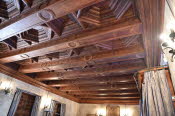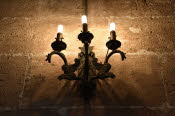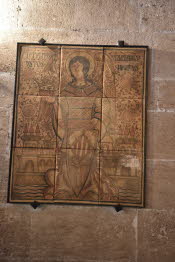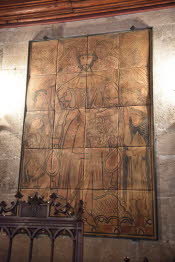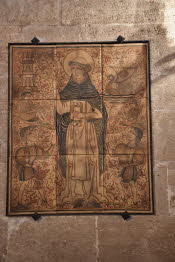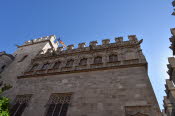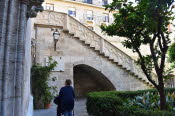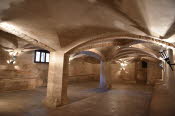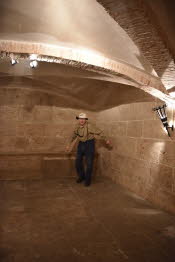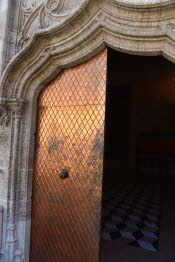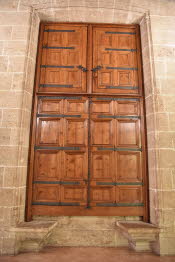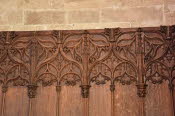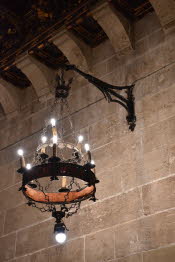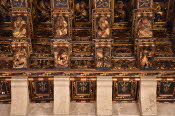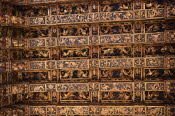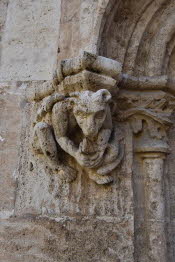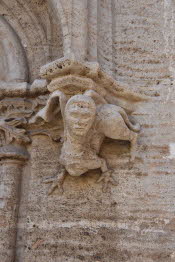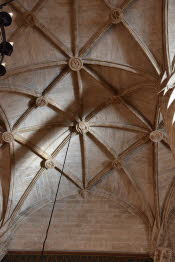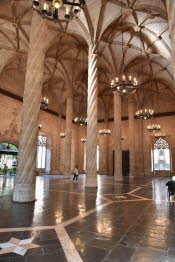The Silk Exchange
La Lonja de la Seda de Valencia
The Silk Market is the main monument of the city and a masterpiece of civil Gothic architecture. The building has been declared by UNESCO as part of Humanity's Heritage. Construction on the Lonja began in 1483, a project of renowned master builder Pere Compte. Its resemblance to old Medieval castles is based on the rigid appearance of a fortress accentuated by its stone walls. The building contains four main parts, each one for a different use: the main Tower, the Consulado del Mar room, the Patio de los Naranjos (Orange tree courtyard), and the Contracts Room (with many spiral columns).
Built during Valencia's golden age, the 15th century, when the Kingdom of Valencia was at its economic and cultural peak, serving as the flagship of the Crown of Aragon throughout the Mare Nostrum, the Valencia Silk Exchange, or Lonja de la Seda, is one of the best examples of Gothic civil architecture in the entire Mediterranean. This architectural masterpiece was declared a UNESCO World Heritage Site in 1996. Visitors entering the forest of palm-tree-shaped columns that span its magnificent main hall, are spellbound by its enigmatic carvings, which hold the secrets and mysteries of a society that was just opening itself up to the Renaissance - secrets that still remain hidden to us today.
The silhouette of the Lonja and its main façade, which overlooks the historic Plaza del Mercado, is part of one of the most attractive and architecturally important corners of the ancient capital of the Region of Valencia. To the left, above its traditional little porxets, or porticoes, stands the Royal Church of St.John of the Market, known as the Santos Juanes. Also Gothic, and splendidly decorated in the Valencian Baroque style, it was declared a National Historic Monument in 1947. Opposite, stands the no less impressive Central Market, with its wrought-iron, ceramic and glass cupolas. One of the most outstanding Modernist buildings in Valencia, it still functions as a market, and is one of Europe's largest fresh food outlets. The busy atmosphere inside immerses visitors in a myriad of delightful smells, flavours and colours.
This outstanding urban space was already an area of tradesmen and merchants in medieval times, when the church of the Santos Juanes was still a mosque. The Silk Exchange stands on a rectangle of ground covering about 2,000 square metres. In the late 13th century, before the building that you see here today existed, the old exchange stood here. But the financial momentum the city was gradually acquiring as capital of Jaime I's new kingdom, meant the city had to build a new exchange, more in line with its requirements, and more ornate in style.
he first stone was laid in 1482, after the City Council purchased 25 houses for demolition, to obtain land for the new building, and construction began one year later. The man behind this project was the engineer and architect, Pere Compte, but he never saw his work completed. After his death a number of masterbuilders continued to work on the part of the building that was to become the Consulat del Mar, or Consulate of the Sea, which Compte had begun in 1498, and which was finished in 1548.
|
|||||||||||||||||||||||
|
|
|||||||||||||||||||||||
|
|||||||||||||||||||||||
|
|
|||||||||||||||||||||||
|
|||||||||||||||||||||||
|
|
|||||||||||||||||||||||
|
|||||||||||||||||||||||
|
|
|||||||||||||||||||||||
|
|||||||||||||||||||||||
|
|
|||||||||||||||||||||||
|
|||||||||||||||||||||||
|
|
|||||||||||||||||||||||
|
|||||||||||||||||||||||
|
|
|||||||||||||||||||||||
|
|||||||||||||||||||||||
|
|
|||||||||||||||||||||||
|
|||||||||||||||||||||||
|
|
|||||||||||||||||||||||
|
|||||||||||||||||||||||
|
|
|||||||||||||||||||||||
|
Copyright
Viewgrant Pty Ltd 2025
Richardsclan
Welcome to Herman and Carolann’s Travels to Europe
Adventures Barcelona and Beyond 2018
